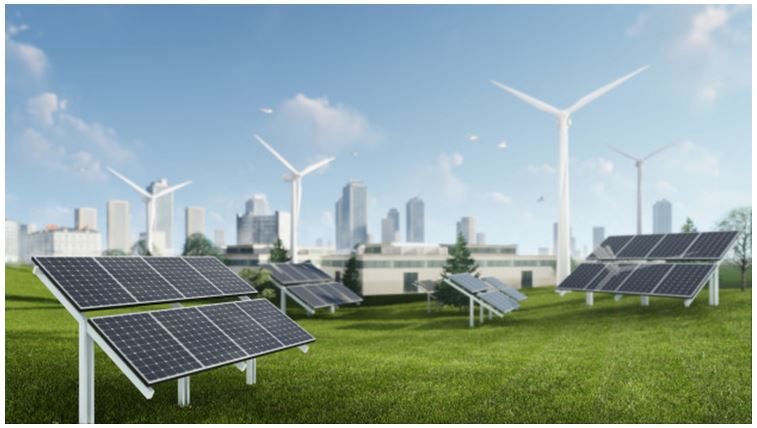Types of energy renewable, which means sustainable energy, anything that cannot run out or endless, such as the sun. When you hear the term “alternative energy” it usually refers to renewable energy as well.
It means energy sources that are alternative to the most used unsustainable sources – such as coal, and this is what we explain to you in detail in this topic.

Definition of renewable energy
Before we start listing the types of renewable energy, we first define renewable energy, namely:
- Renewable energy often referred to as clean energy, comes from natural sources or continuously replenished processes.
- For example, sunlight or wind continues to brighten and storm, even if their availability depends on time and weather.
- While renewable energy is often seen as a new technology, nature’s energy has long been used for heating, transportation, lighting, and more.
- The winds turned boats to sail the seas and windmills to grind grain.
- The sun provided warmth during the day and helped light the fires into the evening. But over the past five hundred years or so, humans have increasingly turned to cheaper and dirtier energy sources such as coal and fractured gas.
- Now that we have innovative and less expensive ways to capture and retain wind and solar energy, renewables are a more important source of energy, accounting for more than an eighth of the US generation. The expansion of renewables is also happening on large and small scales, from rooftop solar panels in homes that can sell energy back into the grid to giant offshore wind farms.
- Even some entire rural communities depend on renewable energy for their heating and lighting.
- As the use of renewable energy continues to grow, the main goal will be to modernize the US electricity grid, make it smarter, safer, and better integrated across regions.
Types of energy renewable
If we look at the types of renewable energy, we will find that they are widely available and that they are even simpler than non-renewable energy resources. In the following, we show you the types of renewable energy in detail:
Solar energy
- Sunlight is one of the most important and abundant types of renewable energy available on our planet and therefore it is the most reliable resource.
- The amount of solar energy that reaches the Earth’s surface in one hour is more than the total energy requirement on the planet for an entire year.
- Although it appears to be an ideal source of renewable energy, the amount of solar energy that we can use varies according to the time of day and season of the year as well as geographical location.
- Solar energy is an increasingly popular way to supplement your energy use in western countries.

Wind Energy
- The wind is an abundant source of clean energy.
- Wind farms are an increasingly common sight in the UK as wind power increasingly contributes to the national grid.
- To harness electricity from wind energy, turbines are used to power generators that feed electricity into the national grid.
- Although domestic or “off-grid” generation systems are available, not every character is suitable for a local wind turbine.
Hydropower
- As a source of renewable energy, hydropower is one of the most commercially developed resources.
- By building a dam or a dike, a large reservoir can be used to create a controlled flow of water that drives a turbine and generates electricity.
- This energy source is often more reliable than solar or wind power (especially if it is tidal rather than river) and also allows electricity to be stored for use when demand reaches a peak.
- Like wind power in certain cases hydropower can be more viable as a commercial energy source (dependent on the type and compared to other energy sources) but depending heavily on the type of character it can be used for home “off-grid” generation.

Tidal Energy
- This is another form of hydropower that uses twice daily tidal currents to power turbine generators.
- Although tidal flow, unlike some other hydropower sources, is not static, it is highly predictable and can thus compensate for periods when the tidal current is low.
Geothermal energy
- By harnessing the natural heat beneath the earth’s surface, geothermal energy can be used to directly heat homes or to generate electricity.
- Although it uses energy directly beneath our feet, geothermal energy has little importance in the UK compared to countries such as Iceland, where geothermal heat is more freely available.
Biomass energy
- This is the conversion of solid fuels made from plant materials into electricity.
- Although biomass primarily includes burning organic materials to produce electricity, this does not mean burning wood, and nowadays it is a much cleaner and more energy-efficient process.
- By converting agricultural, industrial, and household waste into solid, liquid, and gaseous fuels, biomass generates energy at a much lower economic and environmental cost.

